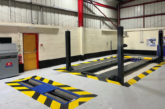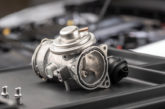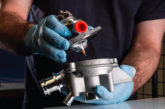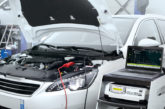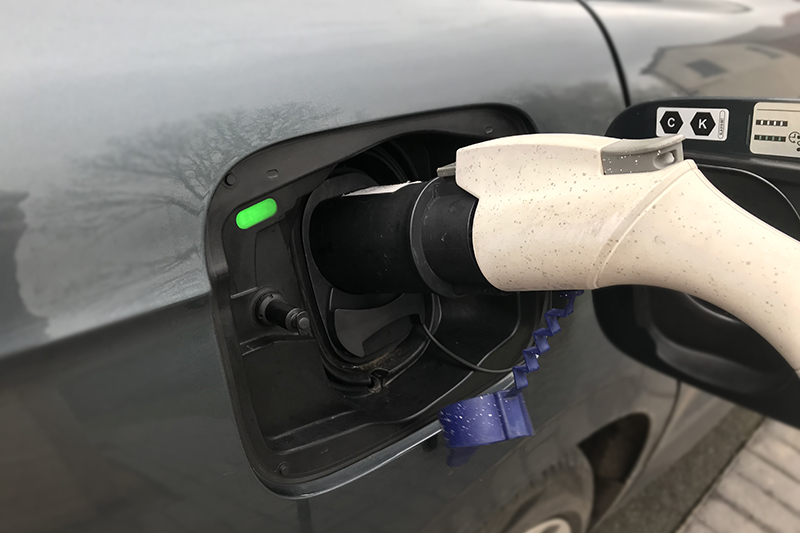
Maverick Diagnostics’ Managing Director Andy Brooke is a self-confessed petrol head. If he can learn to live with, and even love, EVs, you can too!
I use EVs and hybrids every day. I think I’ve worked out how to do it without causing myself anxiety or stress and I’ve even learned to love them.
Let’s go back to 2018, at the time my daily driver was a B7 RS4 Avant, the last of the great manual V8s. I spent a lot of time at our local shell station putting “super” in it and had a Greggs loyalty card. I found I was quickly getting much fatter and much poorer owning an RS. I decided to sell it as it also consumed brakes, tyres and more importantly workshop time at a dramatic rate, I loved the noise so it was hard to say goodbye.
I started to use a pool car, our technical director’s ex-company car, a 2015 Mitsubishi PHEV or the company ‘milk float’ as I love to call it. It was only a little more exciting than a Leaf, but I realised it suited my life in some ways and I was soon taking delight in losing weight and visiting the Shell station once a month instead of three times a week. To explain, I walk my two German Shepherds every morning in the local nature reserve five miles away: total fuel cost, zero. Throughout the day running around local journeys, still zero; driving to the mother in law’s 40 miles away, the battery runs out around 20 miles. It then becomes a 2.0l petrol car towing a mountain of batteries, not so great but still 40 mpg overall.
It is still not an RS4, however I considered many options, whilst in the meantime our technical director ordered a Skoda Enyaq. It is half the price of an Audi E-tron and is an excellent car, with everything you need as long as you only need to do less than 260 miles in a day. I was really surprised at how much I liked it. It’s not trying to compete with a Tesla as it’s limited to 99mph and it’s made by a car manufacturer, not a technology company. This means we all can work on them; I have already looked at the servicing and used my ODIS (VAG) tool on it and it all makes sense after being EV-trained.
Eventually the Nissan Leaf, like all old EVs, has developed a fault: it isolated itself when charging and the battery pack needed a rebuild; this really got me thinking and I embarked on a research project. I did lots of research, looked at documentation, joined EV forums, purchased a Nissan OEM tool, spoke to Nissan dealers, and realised what a massive trick the aftermarket will be missing. The dealer simply didn’t have clue what to do with older EVs. I asked about replacement batteries, even diagnosing issues – they were absolutely clueless and had no trained technician available at their dealership. Those who had some idea quoted a price of over 20k for a Nissan Leaf battery pack for a car worth 4k. I’m now spending an awful lot of time looking at diagnostics, battery replacement and training and thinking of starting an EV specialist training centre and workshop.
My point is we all need to experience and will experience these vehicles sooner rather than later. The technology is not going backwards and you can’t rely on your old customers to carry on buying internal combustion engine cars, despite the battery and infrastructure issues. As most of your customers do have driveways to charge their cars on and probably travel less than a couple of hundred miles a day, they will be buying one sooner rather than later. Deals are already out there and MG has just brought out an affordable EV SUV that I’m told is taking the mobility market by storm.
My advice: buy one, drive one or just try one, look at its beauty (hmmm), book yourself on some training, learn to love them and more importantly keep loving petrol as a hobby or sport (especially V8s, superchargers and big turbos with nitrous to spool them up!).
So when did I finally fall in love with them? When I needed something that outperformed my RS4, costs less than a Skoda Enyaq, does 70mpg, goes 350 miles on 40 litres of fuel, is made of carbon fibre and is utterly bonkers looking, I bought a BMW i8.
Unfortunately, I can’t get the dogs in it, so I still use the old ‘milk float’ every day.



